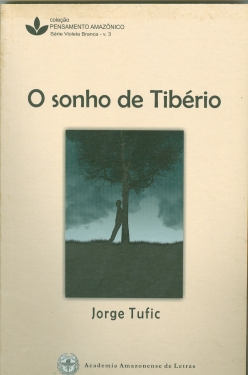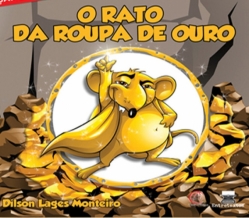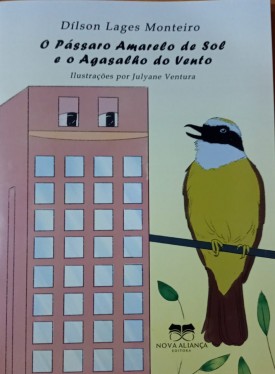Animais na heráldica (IX)
 Por Flávio Bittencourt Em: 07/12/2009, às 14H49
Por Flávio Bittencourt Em: 07/12/2009, às 14H49
Animais na heráldica (IX)
Num brasão da heráldica húngara, um índio americano aparece caçando, com arco e flexa, um cervo que não terá vida longa.

O interessante nesse brasão é, também, que o navio simboliza as navegações à América.
(A legenda é desta Coluna "Recontando", mas a reprodução do interessantíssimo brasão húngaro está, na Web, em: http://www.lazarusorder.net/Order_Nobility_Heraldry.htm)
Em sofrida - pela inaceitação da perda - memória de Enéas Carneiro, guru político-científico-teatral/barbudo da Coluna "Recontando Estórias do Domínio Público", como reconhecimento por ter sido ele maravilhoso "chato" que repetia discursos sobre os minérios do Brasil [assim como o colega-político do Dr. Enéas, Eng. Leonel de Moura Brizola, falava muito das perdas internacionais]: esta Coluna foi inventada para que se continue a falar, de forma até um pouco repetitiva, NOS MINÉRIOS DO BRASIL e nas tais PERDAS INTERNACIONAIS: "MINÉRIOS DO BRASIL, PERDAS NO COMÉRCIO INTERNACIONAL, MINÉRIO DE FERRO DO BRASIL, PREJUÍZO EM TROCAS DO COMÉRCIO EXTERIOR, OURO BRASILEIRO, REMESSA DE LUCROS PARA O EXTERIOR, MANGANÊS DO BRASIL, ENÉAS, BRIZOLA, BRIZOLA, ENÉAS, ENÉAS, BRIZOLA" etc.
Na Hungria, como em vários outros países, a atenção se voltava às grandes navegações e às descobertas ultramarinas. É aí que entra o Brasil (como os EUA, o México, a América Central, os países andinos etc.). Inicialmente objeto de curiosidade de viajantes, logo os interesses se voltaram às riquezas materiais no Novo Mundo. E os saques foram efetuados. Carregaram daqui o que conseguiram mandar para a Europa - com o agravante de aquilo que ia para Portugal, acabava na Inglaterra! -, o que possibilitou que os saltos das revoluções industriais acontecessem. AGORA QUEREM LEVAR OS MINÉRIOS DA AMAZÔNIA - e setores ditos progressistas do Brasil vaiavam - chamando-o de "fascista" - o homem que falava de NIÓBIO, CASSITERITA, OURO e outros minérios do Brasil: o Dr. Enéas Carneiro, médico de médicos, professor de cardiologistas brasileiros, um patriota, enfim.
Vejamos essa mais do que interessante página da Web, replena de imagens e informações curiosas, FABULOSAS como o "descobrimento" - a invasão - do Novo Mundo, do qual a Hungria não participou. Não participou nas caravelas, mas participou no interesse pelos relatos dos viajantes, também na Europa Oriental CONTADOS E RECONTADOS. Eis aí, portanto, alguns dos RECEPTORES daquelas ESTÓRIAS ESTUPENDAS.
|
"Hungarian Heraldry |
|||||||||||||||||||||||||||||||||||||||||||||||||||||||||||||||||||||||||||||||||||||||||||||||||||||||||||||||||||||
|
|
||||||||||||||||||||||||||||||||||||||||||||||||||||||||||||||||||||||||||||||||||||||||||||||||||||||||||||||||||||||
| The Hungarian Heraldry fall into several groups within three main categories. The first category consist of Coat of Arms granted by the ethnic Hungarian monarchs prior to Angevian accost of Hungary. The second category consist of Coat of Arms issued by the Angevian and other foreign monarchs during their rain in Hungary. And the third category comprises of the Coat of Arms issued to Hungarians during the Habsburg domination.
It is true that even the early Hungarian Coat of Arms were somewhat different from other western European Arms. But the fact of the matter is that the difference between early European Coat of Arms and the early Hungarian Coat of Arms was not that great. As already pointed out the changes in Hungarian Heraldry started during and after Angevian period. However, the most notable differences, especially those that are most of the time subject of lively discussion when debating the rules of Hungarian Heraldry, occurred during the Hapsburg period. By knowing this, we should be asking ourselves if the Cost of Arms issued to Hungarians under Hapsburg rule represented truly Hungarian heraldic culture or were intended to distort it or discredit it. The facts indicates that the intend was to distort it and discredit it. Without a doubt the relationship between Austrian Hapsburgs and Hungarians was not on a equal footing from the Hapsburgs point of view. The Hapsburgs influence over Hungarians was demonstrated to the Austrians and to the rest of the Europe with a specific tint and ridicule. They simply portrayed the Hungarians as some sort of exotic eastern nomads who needed Hapsburg hand to protect them and the Austrian crown to watch over them. During this period the most effective method to publicly demonstrate and reflected this attitude over the Hungarian elite (the Nobility) was trough the heraldry. Since the office of the Hungarian herald was under the control of Hapsburgs it was a easy task. Unfortunately, or perhaps fortunately, today when people speak of the Hungarian Heraldry they mostly refer to the period that expresses only these specific differences. |
||||||||||||||||||||||||||||||||||||||||||||||||||||||||||||||||||||||||||||||||||||||||||||||||||||||||||||||||||||||
| The Hungarian heraldry from the Hapsburg era is unlike any other style of heraldry anywhere. It flagrantly breaks virtually every heraldic convention. Early Hungarian heraldry (ca. 1400 and before) differs from German heraldry only in the fact that it tends to use more demi-beasts, crowns, and mounts or bases that German heraldry from the same period. Some Hungarian heraldry from this period is very simple. As it should be. For example: Per bend sinister embattled Argent(??) and gules, two roses counterchanged. | ||||||||||||||||||||||||||||||||||||||||||||||||||||||||||||||||||||||||||||||||||||||||||||||||||||||||||||||||||||||
|
||||||||||||||||||||||||||||||||||||||||||||||||||||||||||||||||||||||||||||||||||||||||||||||||||||||||||||||||||||||
|
EXAMPLES OF THE HUNGARIAN HERALDRY |
||||||||||||||||||||||||||||||||||||||||||||||||||||||||||||||||||||||||||||||||||||||||||||||||||||||||||||||||||||||
| Early ethnic Hungarian Coat of Arms. | ||||||||||||||||||||||||||||||||||||||||||||||||||||||||||||||||||||||||||||||||||||||||||||||||||||||||||||||||||||||
|
||||||||||||||||||||||||||||||||||||||||||||||||||||||||||||||||||||||||||||||||||||||||||||||||||||||||||||||||||||||
| Early Hungarian Coat of Arms with some German influence. | ||||||||||||||||||||||||||||||||||||||||||||||||||||||||||||||||||||||||||||||||||||||||||||||||||||||||||||||||||||||
|
||||||||||||||||||||||||||||||||||||||||||||||||||||||||||||||||||||||||||||||||||||||||||||||||||||||||||||||||||||||
| Hungarian Coat of Arms issued under Hapsburg rule. | ||||||||||||||||||||||||||||||||||||||||||||||||||||||||||||||||||||||||||||||||||||||||||||||||||||||||||||||||||||||
|
||||||||||||||||||||||||||||||||||||||||||||||||||||||||||||||||||||||||||||||||||||||||||||||||||||||||||||||||||||||
|
||||||||||||||||||||||||||||||||||||||||||||||||||||||||||||||||||||||||||||||||||||||||||||||||||||||||||||||||||||||
| Scots call Robert Dinwiddie's Coat of Arms "EXTRAORDINARY". | ||||||||||||||||||||||||||||||||||||||||||||||||||||||||||||||||||||||||||||||||||||||||||||||||||||||||||||||||||||||
|
||||||||||||||||||||||||||||||||||||||||||||||||||||||||||||||||||||||||||||||||||||||||||||||||||||||||||||||||||||||
===
O ESCRITOR MIGUEL CARQUEIJA
Já foi apresentado, nesta Coluna, um conto (ótimo) de Miguel Carqueija. Você o encontra em:
É natural que os amáveis leitores queiram informações sobre quem nos proporciona momentos de prazer na leitura. [Roland Barthes referiu-se ao prazer do texto, como se sabe.] Abaixo. pode-se verificar alguns dados sobre esse formidável escritor carioca que se dedica ao estudo e à produção de literatura de ficção científica, num Prefácio competentemente escrito por Jorge Luiz Calife.
"A Face Oculta da Galáxia
Miguel Carqueija
Prefácio de Jorge Luiz Calife
Miguel Carqueija pertence a uma geração de escritores de fantasia e ficção científica que surgiu na década de 1980. Diferente da “geração GRD” dos anos 60, a geração 80 conseguiu vencer o bloqueio editorial contra a ficção científica nacional através dos fanzines que proliferavam de norte a sul do país, naquela época. Tinhamos o Antares em Porto Alegre, o Megalon e o Juvenatrix em São Paulo, e o Somnium do Clube dos Leitores de Ficção Científica, este juntando o pessoal do Rio e de São Paulo.
Estes fanzines deram abrigo a um grupo de escritores que cresceu em uma época em que as viagens espaciais não eram mais uma fantasia de história em quadrinhos e quando o mundo se transformava, através da revolução da informática e da biotecnologia, para criar este cenário do século 21 em que vivemos agora. Paralelamente a isso, a ficção científica passava por um período de grande popularidade no mundo, com filmes cheios de efeitos especiais, histórias em quadrinhos de grande beleza gráfica e a primeira geração dos jogos de computador. Um ambiente portanto muito estimulante para se sonhar com mundos possíveis e impossíveis.
Foi nesse período que conheci o Miguel, nas reuniões do CLFC do Rio de Janeiro e comecei a apreciar suas histórias, cheias de uma temática e um estilo bem pessoais, e cuja leitura tornava ainda mais agradável a chegada de um novo fanzine. Com nosso entusiasmo pelo papel das mulheres no futuro da humanidade várias vezes trocamos idéias e opiniões sobre novas histórias envolvendo fascinantes heroínas.
E aqui está o Miguel, em pleno uso de sua imaginação, com uma novela que envolve espionagem e ficção científica, e que nos leva para um passeio fantástico pela “Face oculta da Galáxia”. Os dois gêneros, o romance de espionagem e o romance de ficção científica se desenvolveram paralelamente no século passado, cada um contribuindo para o outro e as vezes se unindo num casamento delicioso. Pouca gente se lembra, mas o primeiro agente secreto interplanetário foi o “Buck Rogers” dos quadrinhos. Principalmente na fase desenhada por Gene Tuska, entre 1959 e 1963, quando o “primeiro herói espacial da HQ” virou um James Bond futurista, percorrendo planetas exóticos em missões para o Diretório Terrestre. Sempre equipado com engenhocas de altíssima tecnologia e acompanhado por duas belas damas: A loira Vilma e a morena Carol. Foi essa fase do Buck Rogers que influenciou o seriado de TV dos anos 70, com o Gil Gerard, o robôzinho Twiki e um monte de beldades.
Mas que ninguém acuse o Buck de copiar James Bond. Os dois se desenvolveram paralelamente. Na mesma época surgiu também a espiã mais famosa dos quadrinhos, a inglesa Modesty Blaise, que influenciou a lady Penelope dos Thunderbirds (Magistralmente recriada em carne e osso, ano passado, pela Sofia Miles) e a Barbarella da dupla Roger Vadim e Jean Claude Forrest. Sim, porque a personagem da Jane Fonda no filme de 1967 é uma agente secreta em missão especial no sistema solar vizinho da estrela Tau Ceti.
A brasileira Joana Pimentel, codinome Vesper é quem nos serve de guia em “A face oculta da galáxia”. Ao contrário de suas antecessoras, a personagem do Miguel está aposentada das “missões de campo” aos 40 anos de idade, depois de perder o marido e parceiro em uma missão. Mas como toda agente secreta que se preza ela é chamada para “mais uma última missão” e resolve aceitar, forçada por uma situação econômica difícil, agravada por mais um daqueles planos econômicos do governo (Parece que nem no futuro o Brasil escapa disso).
É o começo de uma aventura cheia de ação que nos leva aos cenários surrealistas do planeta Sombrio e a busca por um artefato que pode destruir o Universo. Com seu estilo cinematográfico Miguel cria uma aventura que ficaria perfeita num filme ou desenho animado daqueles bem coloridos. A trama é envolvente e arrastou-me pela madrugada a fora até o desfecho final.
Final que deixa um bom gancho para uma continuação, prometendo, quem sabe um dia, um confronto final entre Vésper e a assassina profissional Valentina. Afinal, agente secreto que se preza não se aposenta nunca.Jorge Luiz Calife
Sobre o Autor
Miguel Francisco da Cruz Carqueija, conhecido apenas por Miguel Carqueija, nasceu em 14 de agosto de 1948 no Rio de Janeiro (capital) e é funcionário do Banco do Brasil desde 1982.
Como escritor especializou-se em ficção científica produzindo contos, mini-contos e novelas, além de resenhas críticas de livros em geral de autores nacionais.
Desde 1983 participa do fandom de ficção científica e gêneros próximos, como a fantasia, o terror e a narrativa policial. Colaborou em diversos fanzines como Megalon, Hiperespaço, Somnium, Notícias do Fim do Nada, Scarium e outros. Teve trabalhos publicados em revistas profissionais como Dragão Brasil e Perry Rhodan.
Participou de aproximadamente vinte antologias, algumas especificamente de ficção científica como “Dinossauria Tropicalia” (Edições GRD, S.Paulo, 1994), algumas de poesias (somente na década de 80) e outras de caráter misto, como as do Banco de Talentos da Febraban (trabalhos de bancários). Entre os trabalhos recentes destaca-se a participação na antologia “Vinte voltas ao redor do Sol”, edição independente do Clube de Leitores de Ficção Científica, em 2005 e vários contos publicados na revista Perry Rhodan, da editoras SSPG (Belo Horizonte).
Autor de alguns livros individuais independentes, como “A âncora dos Argonautas”, “A Esfinge Negra”, “A Rainha Secreta” e “As luzes de Alice”.
Com muitos textos colocados em páginas virtuais (exemplo, o conto “Eu sei o que vocês vão fazer no próximo verão”, na página virtual www.scarium.com.br).
O conto “O tesouro de Dona Mirtes”, originalmente publicado em 1999 pelo fanzine Juvenatrix e na edição daquele ano do Banco de Talentos, foi filmado em curta-metragem pelo grupo Arte Urbana, de Ribeirão Preto, em 2004.
Os contos de Miguel Carqueija apresentam críticas sociais em ambiente futurista, sátiras, histórias de espaço profundo, fantasias, terror (parte no universo lovecraftiano) e fanfics. Nas novelas, predominam as heroínas em aventuras espaciais e futuristas.
Miguel Carqueija também dá palestras sobre assuntos de ficção científica em geral e brasileira, quadrinhos, cinema e desenhos animados". (JORGE LUIZ CALIFE)
(http://www.casadacultura.org/Literatura/Ficcao_Cientifica/E-books/gr01/Face_Oculta_Galaxia.html)
EM TEMPO: CATÓLICO PRATICANTE E DEFENSOR INTRANSIGENTE DE ANIMAIS, MOLESTADOS/MORTOS POR HUMANOS DOENTIOS, MIGUEL CARQUEIJA É UMA DAS PESSOAS MAIS ÍNTEGRAS, ÉTICAS E GENEROSAS QUE CONHECI. A ELE, O FRATERNO ABRAÇO DO AMIGO QUE MUITO O ESTIMA E ADMIRA, FB



























